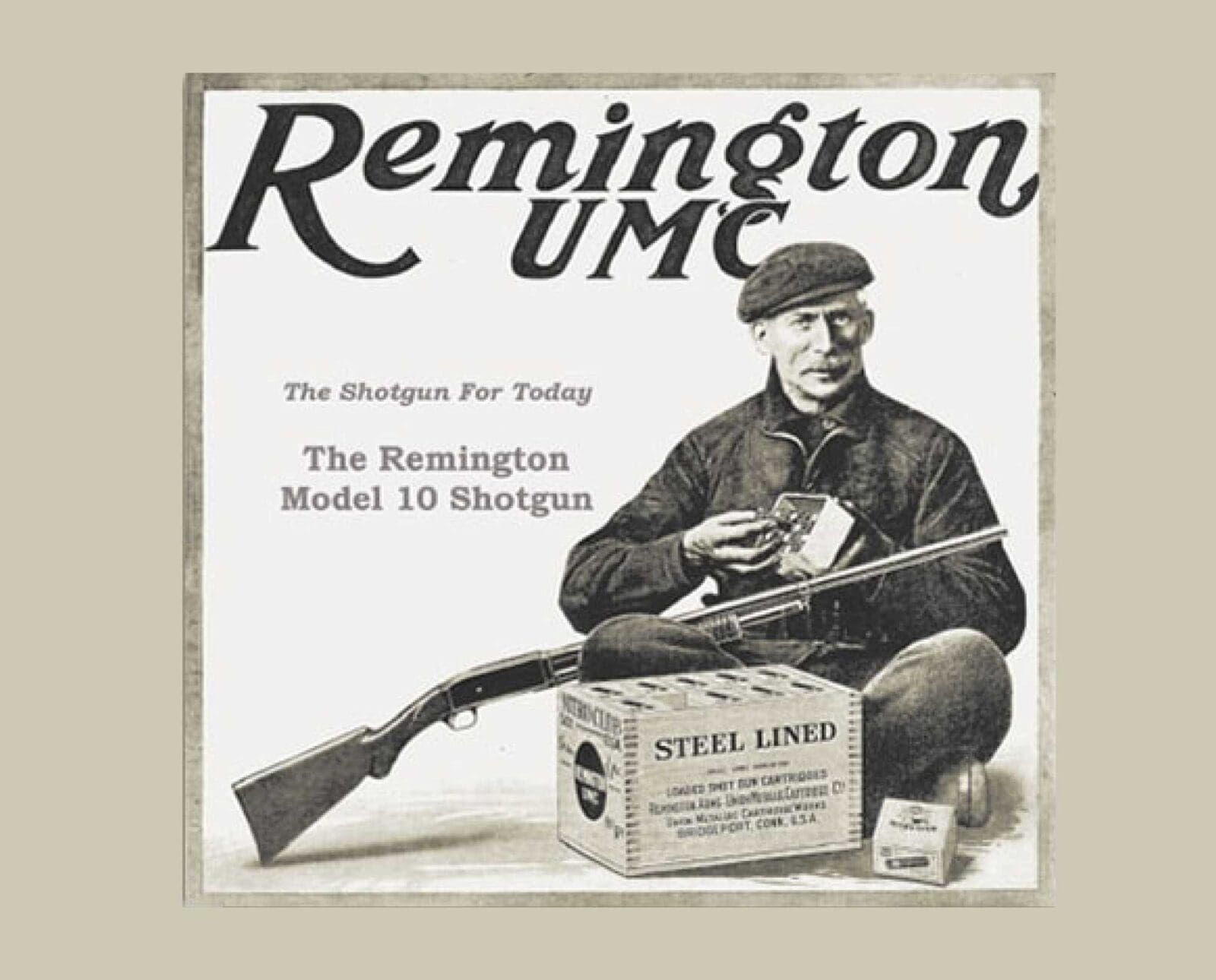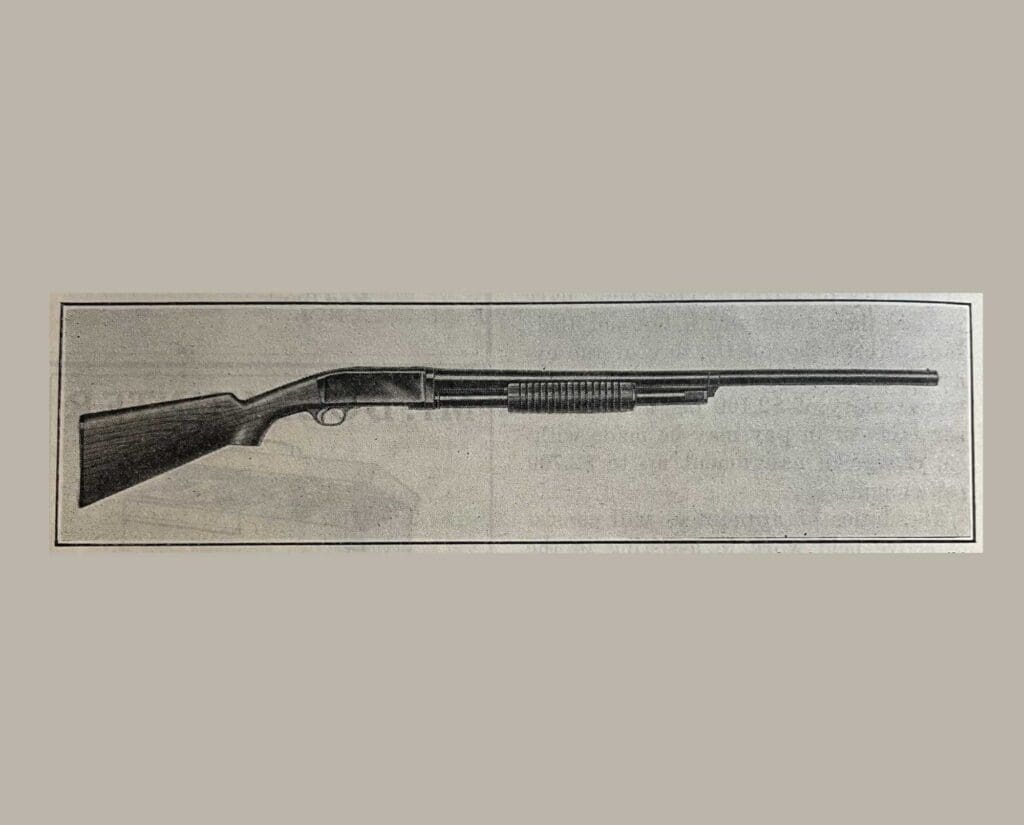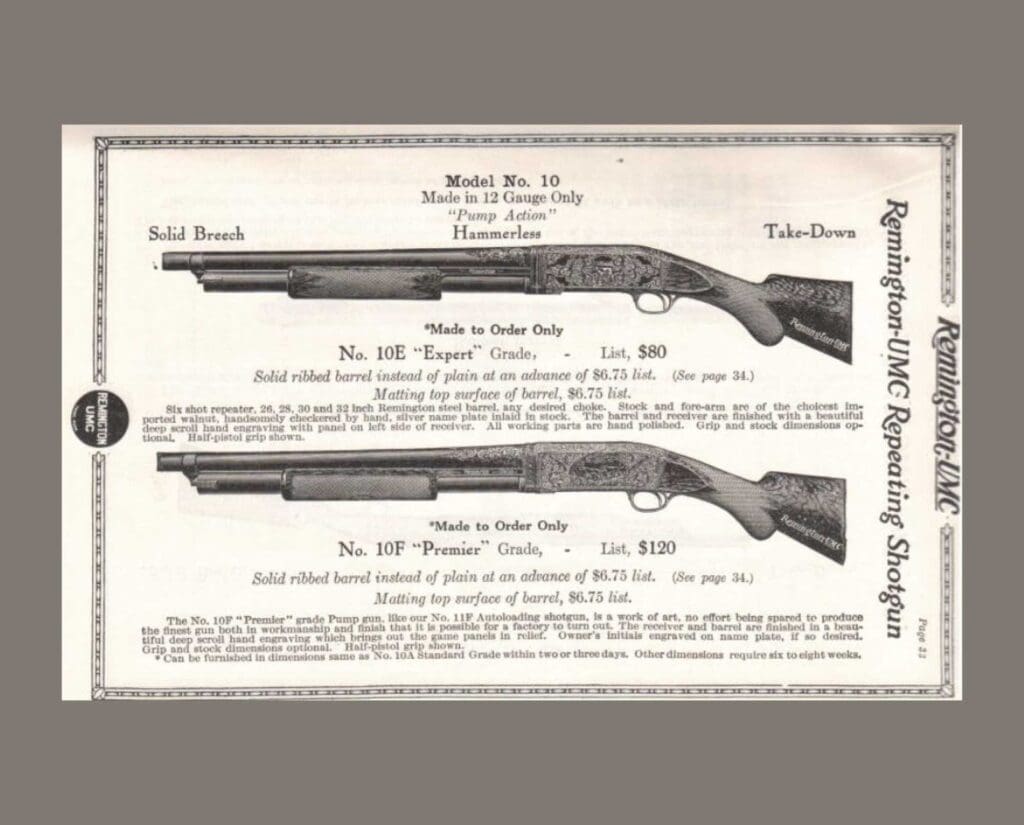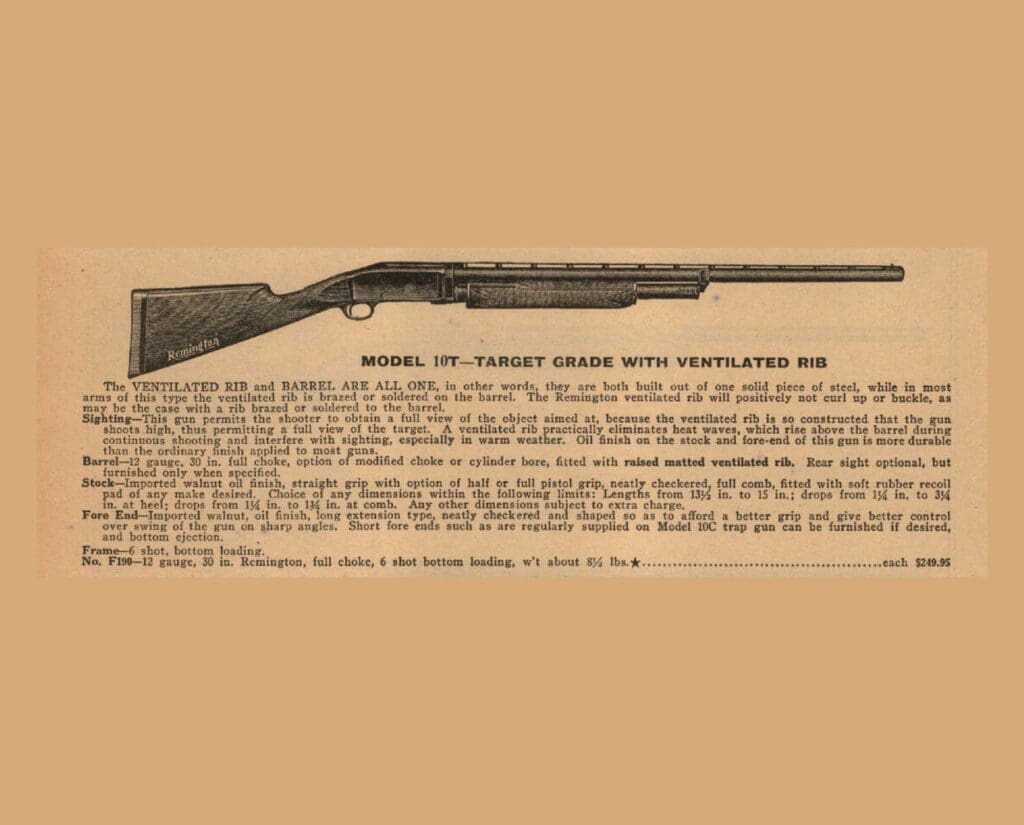Home » Firearms and Shooting » Shotguns » Remington Model 10 – Pump-Action Shotgun
Remington Model 10 – Pump-Action Shotgun

A.J. DeRosa, founder of Project Upland, is a New England…
The Remington Model 10 shotgun was the first bottom-ejecting shotgun introduced to the American market and is no longer in production.
The Remington Model 10 shotgun represents a time when shotgun advancement for repeating firearms was happening at lighting speed. First developed in 1908, it was used by the United States in World War 1 as a “trench gun” with shortened barrels. It became the first pump shotgun to use a bottom-ejecting style action. A model 17 in 20-gauge was introduced soon after. The shotgun’s legacy would go on until the Remington Model 29 was introduced in 1930. The only pump-action model shotgun Remington still offers today is the Remington 870 Pump-Action Shotgun.
Listen to more articles on Apple | Google | Spotify | Audible
Today, used Remington Model 10 shotguns can range from roughly $300 dollars to just over $1000 depending on the quality and condition. Below is part of an article entitled Bottom-Ejecting Shotguns, by Willis O. C. Ellis in the Firearms & Ammunitions section of National Sportsman, October 1924. National Sportsman Magazine was a Boston-based publication edited by iconic upland author William Harnden Foster.

Bottom-Ejecting Shotguns By Willis O. C. Ellis
In the field of firearms the repeating shotgun has come in for its share of attention. Ever since the first shotguns were made to load and reload by operating the sliding firearm, inventors have tried to outdo each other in the designing of repeating mechanisms that would be strong, certain to function under all conditions, simple in construction and operate to the best advantage for the shooter.
With the first repeating rifles ejecting the shells at the top of the receivers, it was only natural that in designing the first pump guns top ejection should be employed. As time slipped by and rifle inventors closed the top of the receiver and ejected the shells at the side, where they were never tossed across the line of aim, shotgun inventors were quick to see the advantage, and presently the side-ejecting repeating shotgun was offered to sportsmen.
But there yet remained another point on the receiver of the shotgun from which the shells could be ejected, the bottom. For a number of years it was known that the bottom-ejecting shotgun would have several distinct advantages.
First, it would permit of solid top and sides of the receiver which would exclude snow, rain and dirt; second, it would eject the shells down and away from the shooter’s face; third, it would give an extra margin of safety should a shell accidentally explode before the bolt was closed and locked.
But to design a gun to load through the bottom of the receiver and eject the shells at the same place, was a hard nut to crack; but crack it they did. A 12-gauge repeating pump gun, known to the trade as Model 10, was the result.
Specifications of the Remington Model 10 Shotgun
The stock is made of nicely finished American walnut, half pistol grip, 13¾ inches long; drop at comb, 1⅝ inches, drop at heel 2¾ inches; capped with a hard rubber butt-plate. The receiver is drop-forged, possesses great strength and is blued finish, as are all other metal parts. On top of the receiver there is a hollow matted rib 4 inches long that greatly assists in quick aim and prevents reflection of light.
The barrels run from 26 to 32 inches in any degree of boring, plain round being standard, or with matted rib at extra charge. For those accustomed to the double sun the matted rib is recommended. The forearm is made of walnut to match the stock. The magazine holds Are shells which, with one in the chamber, gives six quick shots at one loading.The Model 10 is furnished in 12-gauge only, but fancy stocks and stocks of different dimensions from standard may be had at extra cost. The weight is 7½ pounds.

Remington Model 10 Action
The action of this gun is unique in that it loads and ejects through the same opening in the bottom of the receiver. The breach bolt is a heavy piece of tool steel, is controlled by the sliding forearm and operates entirely within the frame, the receiver being without openings at the top or sides.
When the action is closed and locked, the bolt is supported against rearward movement by resting against a shoulder out in the thick top of the receiver. It is absolutely impossible for any standard 12-gauge load to blow this bolt open.
The entire firing mechanism- the firing-pin, mainspring, cocking head, etc.–is carried by the bolt, the cocking being done as the bolt is forced rear-ward. When the action is unlocked it is impossible to discharge a loaded shell since the firing-pin is blocked by the action bar, the sear is locked in the cocking notch, the trigger does not connect with the sear and the head of the shell does not touch the face of the bolt, until the action is closed and locked. This makes the gun absolutely safe.
The safety lies in the forward portion of the trigger guard. Pulling it rearward locks the trigger. To fire, merely push the safety forward with the back of the trigger finger. This is so easily done that it is not necessary to throw off the safety until the gun is raised for firing.
To guard against any danger that might result from a hang-fire the exploding of a shell a moment after the hammer falls- a recoil lock is provided. By using this the falling of the hammer does not unlock the breech, or bolt, this being effected by the recoil of the exploded shell. In case of a misfire, or when desiring to open the gun when cocked, the button on the right side of the receiver should be pressed in. This throws off the recoil lock and allows the action to be opened.
Remington Model 10 Bottom-Ejection Carrier
The most remarkable part of the action and the thing that makes bottom-ejection possible, is the carrier. Normally this part lies folded against the right side of the receiver, but is free to turn outward towards the bottom of the receiver. After firing, opening the gun extracts the shell and a strong spring in the top of the receiver ejects it through the loading hole at the bottom of the frame. Continuing the rearward movement of the forearm causes the carrier, operated by a powerful cam action of the moving parts, to open outward, closing the bottom of the receiver and releasing a shell from the magazine that drops down on the carrier. Closing the action causes the carrier to lift the shell on a line with the barrel, the bolt pushing the shell into the chamber and locking in the firing position, the carrier folding against the receiver.
The carrier is heavy and strongly made which is a guarantee against breakage. It carries the two cartridge stops and operates them in such a way that it is impossible for two shells to leave the magazine at the same time, doing away with any danger of the jamming or clogging of the action.

To remove the shells from the magazine it is not necessary to feed them through the action. With the action closed, press back the cartridge stop attached to the carrier, which stop normally closes the mouth of the magazine. This will release one shell. Continue this operation until the magazine is empty. Then be sure to open and close the action to remove the shell in the chamber.
Breaking Down and Cleaning the Remington Model 10
In common with all other firearms of this make, this 12-gauge bottom-ejecting shotgun is a take-down, and the barrel with magazine and forearm attached may be removed from the receiver in 30 seconds, or less, for convenient carrying or for cleaning and oiling the bore. The gun should be always taken down for cleaning. The barrel attaches and detaches from the receiver with a quarter turn, and the strong square threads should be kept oiled or greased, also the face of the receiver.
A simple and positive device is provided for taking up any wear that, through long continued use, might occur. The ease with which this gun may be cared for will appeal to the critical gunman. Not only is the barrel most easily detached for cleaning, but with the action closed squirting a little oil on either side of the breech bolt and well to the rear, working the forearm back and forth will thoroughly lubricate the mechanism, make it function easier and reduce the wear on the moving parts.
However, for the best oiling remove the butt-plate and with a long screwdriver take out the bolt that secures the stock, and take off the stock. Open the action and the rear end of the bolt, where most of the working parts may be seen, is easily inspected, cleaned and oiled. Use only a good gun oil, a nitro solvent oil being best as it will not gum. The factory will be glad to furnish instructions for removing the bolt, trigger plate, carrier, etc., which may be easily and quickly done after the stock is off. But the solid top and sides of the receiver protect the action so well and keep it so clean that a complete overhauling of the action is seldom necessary.
A.J. DeRosa, founder of Project Upland, is a New England native with over 35 years of hunting experience across three continents. His passion for upland birds and side-by-side shotguns has taken him around the world, uncovering the stories of people and places connected to the uplands. First published in 2004, he wrote The Urban Deer Complex in 2014 and soon discovered a love for filmmaking, which led to the award-winning Project Upland film series. A.J.'s dedication to wildlife drives his advocacy for conservation policy and habitat funding at both federal and state levels. He serves as Vice Chair of the New Hampshire Fish & Game Commission, giving back to his community. You can often find A.J. and his Wirehaired Pointing Griffon, Grim, hunting in the mountains of New England—or wherever the birds lead them.




What shells can safely be used in this? Can this handle modern loads?